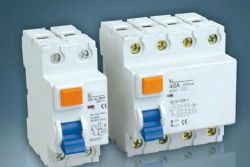
Unless you are a professionally qualified tradesman - or at the very least an experienced DIY-er - you would be well advised to leave any issue concerning Spanish electrics to the experts.
Residual Current Devices - or RCDs for short - often confuse the average owner of a property in Spain. As such Tumbit asked Tony Poole from Sparks in Spain to tell us everything we need to know about RCDs.
"SIMPLY PUT, the RCD is the most important safety device fitted to your electrical installation. It prevents serious electric shock and can save lives. You should not ignore the importance of this little baby !
The RCD is not a fuse, that function is provided by Circuit Breakers (CB) fitted next to the RCD in your Consumer Unit.
Back in 1992, the 16th edition of the IEE Electrical Regulations (UK) changed the name of the good ol' Earth Leakage Circuit Breaker (ELCB) to the Residual Current Device (RCD) in an attempt to more suitably describe it's function. Well, I don't know about that - I had to look residual up in the dictionary - however, it does do a little more than just provide earth leakage protection.
The RCD sits nice ´n quiet in your Consumer Unit (that's a Fusebox in old money) and monitors your electricity supply 24/7. When something changes and it detects a leak of electricity, normally caused by damp or water ingress, between the Live, Neutral and/or Earth it trips-out and disconnects the electricity supply. This stops conductive fixtures in the home, e.g. metal appliances, stainless steel draining boards, copper pipework, etc. from becoming live and prevents a risk of electric shock. The RCD will not allow you to switch the electricity supply back on until the fault is cleared.
The difference here in Spain is that unlike the UK, an RCD must protect the whole of the electrical installation in a domestic dwelling. The RCD must have a minimum rating of 30 mAmps (that's a very small leakage current).
Make sure you test your RCDs at least every 3 months.










